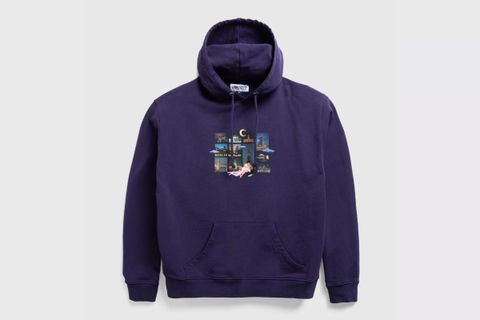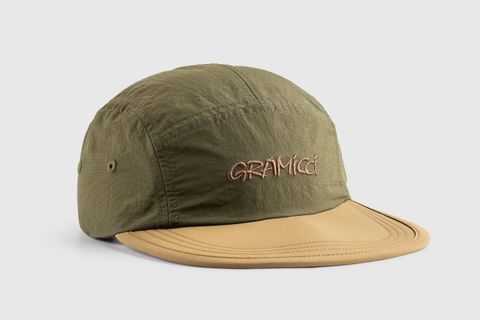Hong Kong’s Proving Its a Cultural Capital at a Crucial Time
March has long been the most important month for Hong Kong’s art scene. Host to a packed schedule of art-related fairs, exhibitions, and events across the region, the month-long arts celebration has picked up steam over the past decade. However, March 2024 was different.
With ComplexCon’s debut in Hong Kong and a closing performance by 21 Savage, his first-ever performance in the region, Christie’s 1-54 Contemporary African Art Fair (its first time in Asia), and Art Basel Hong Kong returning to its pre-pandemic scale, this year, according to absolutely everyone I talked to while I was there, was the biggest Art Month the region had ever seen. And I was there to see it, having flown many hours from Berlin to attend.
“This year’s Art Basel Hong Kong has been bigger and better and it has felt like a return for the international and regional art community to come together again in Hong Kong,” commented Wendy Xu, General Manager for White Cube in Asia. “There has also been a vibrant atmosphere beyond the fair with art events happening all over town.”
My introduction to the scale of the events began at Rosewood, a luxury hotel brand (or as Vickie Ho, Director of Marketing and Communications for Rosewood Hong Kong, calls it: “a lifestyle brand,”). The 65-storey tower on Kowloon’s waterfront could easily double up as an art gallery, housing works from the likes of Damien Hirst, Nancy Lee, and Lynn Chadwick.
It even had something of a temporary exhibition on display. Dutch artist Frederik Molenschot, who was in town for a museum talk with the Dutch designer Piet Boon, embarked on an impromptu artist residency at the hotel. Molenschot’s shape-shifting sculpture S TATI CA (2024) was available to see in one of the foyers and his room turned into a makeshift gallery presenting work he had created during his stay.
The artist spent his nights rummaging through the streets to find materials that he could upcycle and present in his new bedroom-cum-pop-up-exhibition, although some of the trash he found had been mistakenly discarded by the cleaners when they thought it was actual, well, trash.
To kick off Art Basel, Rosewood Hong Kong was hosting one of its many Front Row events, an art and culture-focused program to celebrate its fifth anniversary. It teamed up with Serpentine Galleries to organize a conversation between the newly-announced 2024 Serpentine Pavilion Designer, architect Minsuk Cho, and Sumayya Vally, designer of the 2021 Pavilion.
The two spoke frankly about how their home countries of South Korea and South Africa were inextricably linked to the structures they had created for London’s Kensington Gardens. Then, it was up to the hotel's most exclusive suite, complete with its own private pool and a wraparound balcony bigger than my entire apartment, for a performance by Sophie Ellis-Bextor — yes, the Sophie Ellis-Bextor whose 2001 hit Murder On The Dancefloor is permanently stuck in every TikTok-users head.
The festivities ran late into the evening but there was no time for lingering hangovers the next day; Art Basel Hong Kong was open (well, for a VIP press preview at least).
The Hong Kong Convention and Exhibition Center is a huge air-conditioned auditorium on the harbor of a humid and skyscraper-filled city. And, it was to be home to some of the most exciting names in contemporary art, both established and fledgling, for the next three days.
243 galleries, based in 40 different countries, and 34,782㎡ of exhibition space: Art Basel had a lot to explore.
The art fair has a policy of at least 50% of its galleries being based in Asia (the amount totaled 53% this year) and it saw works presented by the most famous Asian artists, such as Yayoi Kusama, Yue Minjun, and Ai Weiwei; meanwhile, Takashi Murakami was also in town for one of Art Basel’s panel talks.
Sales were relatively strong for the galleries involved, with many million-dollar deals being closed (Victoria Miro made a combined $11 million from three works by Yayoi Kusama) but the highlights came from its Encounters portion, a range of large-scale projects curated by Alexie Glass-Kantor.
Breaking up the typical art show stands, Encounters comprised 16 artworks, 11 of which were made especially for the fair.
Local artist Mak2 created a booth that reached to the ceiling with the top half mirroring what was displayed at eye level but decayed and disheveled. Aboriginal artist Daniel Boyd had an off-site installation at Pacific Place presenting his distinctive dotted style (although some of the artist’s paintings were also viewable on-site). And, the one piece seemingly on everyone's lips after walking out of the convention center and back into the ruthless sticky heat of Hong Kong, was Once upon a time (2020-2024) by Lí Wei.
Plonked in the middle of all the stalls, the Beijing-born artist constructed a full-scale children's playground scattered with eerily life-like models of world leaders as seven-year-olds in school uniforms: Barack Obama was pushing himself down a slide while a straight-faced Angela Merkel span around endlessly on a playground roundabout.
It was an overtly politically-charged piece, and far from being the only one in a fair. As a Chinese journalist remarked to me, many pieces on display likely wouldn’t be allowed to be shown in her home country due to political censorship — something that’s particularly relevant currently, as China is extending its influence over Hong Kong.
The controversial Article 23 security law was passed during Hong Kong Art Month and has caused concerns for civil liberties and worried foreign investors. “Now even possessing a book critical of the Chinese government can violate national security and mean years in prison in Hong Kong," Maya Wang, acting China director at Human Rights Watch, told the BBC about Article 23.
On the ground, talk of this historic law was minimal.
It felt as though much of the foreign press either weren’t aware that it had been passed or weren’t aware of the significant effect it could have on their next lavish business trip to the region. But you can only imagine that there are a lot of worried faces behind the scenes and behind the PR rehearsed messages
“At this stage, we have no indication that Article 23 will have any impact on the way we operate,” was the official line from an Art Basel Hong Kong representative to the New York Times. “We have never faced any censorship issues at our shows, nor have we been asked to do anything differently since the introduction of the National Security Law in 2020.”
This is the first year that Hong Kong’s Art Month could operate at full capacity since COVID-19 restrictions hindered it — and it was a star-studded reminder of the city’s place as a major global art destination. For it to be imposed with new restrictions would be a bitter pill to swallow for everyone involved and hinder an important place of interaction for Eastern and Western art.


